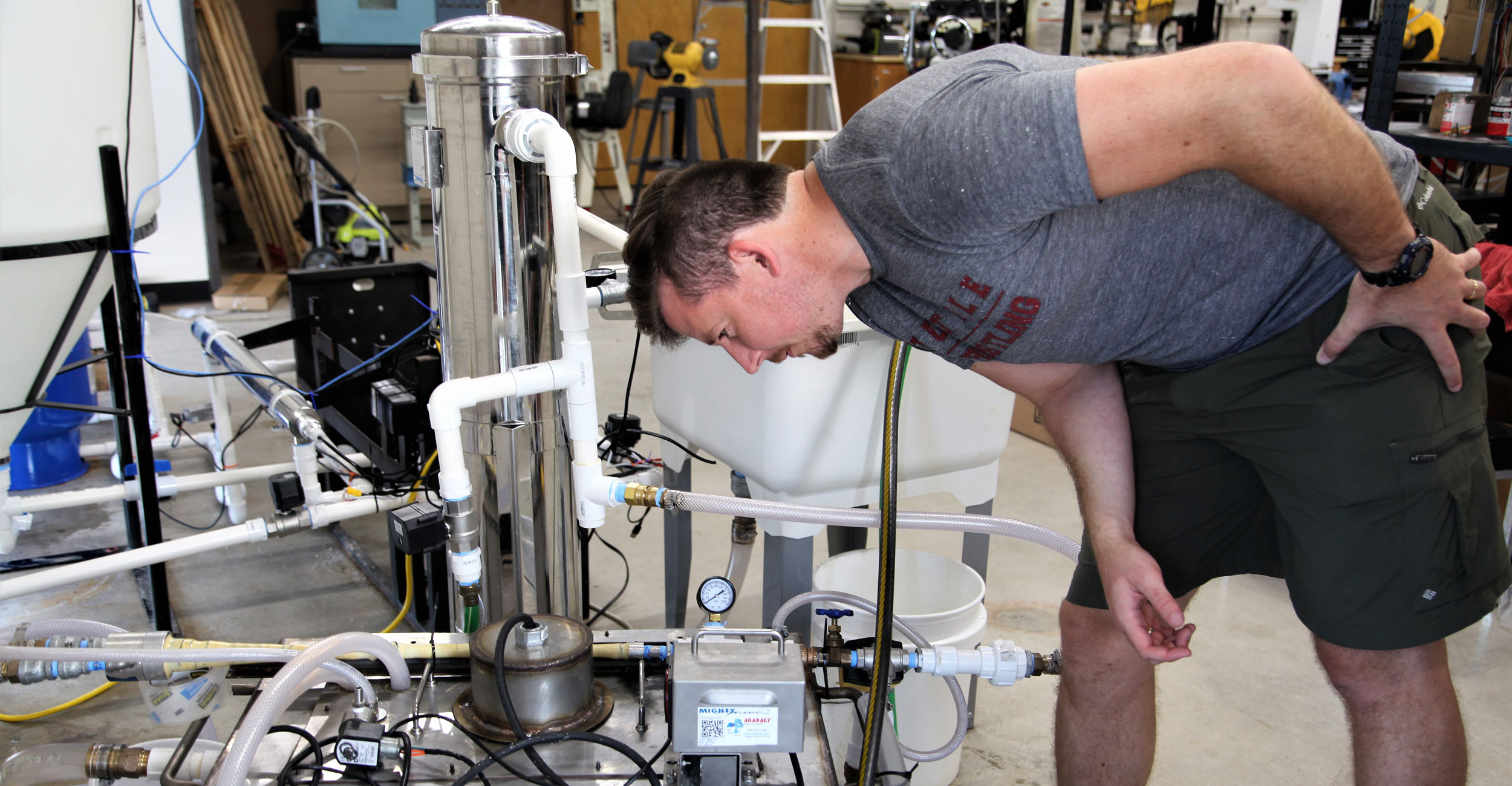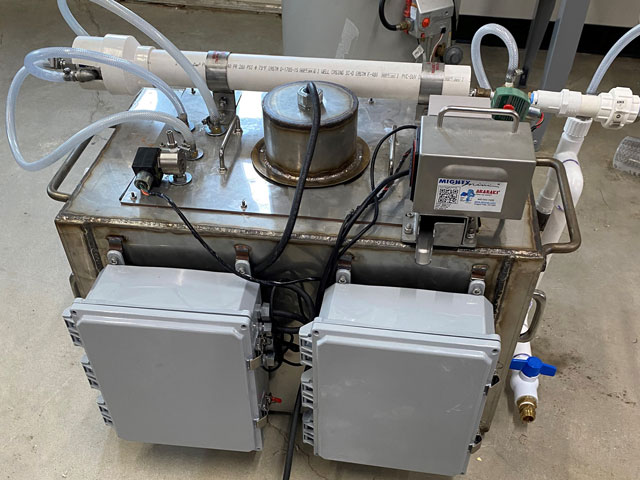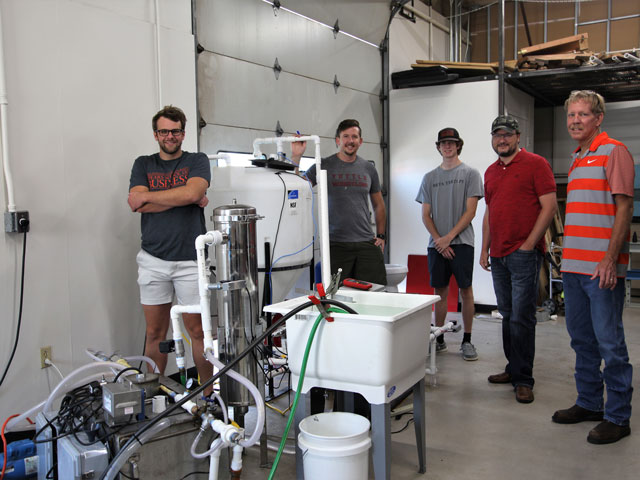
New Product Development Center helps solve a billion-dollar infrastructure problem.
Monday, January 10, 2022
Media Contact: Kristi Wheeler | Manager, CEAT Marketing and Communications | 405-744-5831 | kristi.wheeler@okstate.edu
Public sewer systems are out of site and out.
Urban population concentration has increased rapidly in the U.S., but the size of the pipes hasn’t.
Two Oklahoma State University College of Engineering Alumni — Flint Holbrook, a biosystems and agricultural engineer, and Nic Cain, a chemical engineer — and the New Product Development Center (NPDC) developed a technology that increases sewer capacity by 50 percent without digging up the pipes.
Holbrook and Cain stumbled across this major problem after Holbrook’s father, who works in the infrastructure industry, mentioned that many sewer overflows were caused by fats, oils and greases from restaurants.
As young engineers, this comment got Holbrook and Cain thinking and upon further research, they found that, on average 50 percent of a sewer’s capacity is blocked by build-ups of fats and oils inside the pipes. As kitchen staff in restaurants are washing plates, that little bit of oil left on the plate goes down the drain and eventually hardens like concrete inside the pipe.
The pair found that this problem was pervasive across urban centers and that the taxpayer ends up picking up the bill. Not only does the sewer system not work properly leading to overflows, but cities in the U.S. spend billions each year cleaning their pipes.
THE IDEA
To Cain, this sounded like a simple problem of separation — two liquids with different densities should be able to be separated by gravity. This premise is exactly what the existing technology, the grease trap, should do but it clearly wasn’t working as intended. The pair set out to find a way to consistently capture all fats, oils and greases before they leave the restaurant, ensuring they never enter the sewer.
After two years, many failed experiments and garage prototypes, Holbrook and Cain built a special funnel that relies on centrifugal force and is capable of removing 95-100 percent of fats, oils and greases, regardless of external factors that cause traditional gravity separation to fail like temperature and solids.
The pair realized quickly that the actual separation technology was only one tiny part of what they needed. Somehow, they had to figure out how to develop this idea into a usable cost-effective piece of restaurant equipment.
“We thought we could use centrifugal force instead of just relying on gravity alone,” Cain said. “The huge challenge was finding a way to do it at a small scale so that it fits under the restaurant’s sink, was easy to use, and cost effective.”

GETTING TO PRODUCT
Holbrook engaged Dr. Robert Taylor, director of NPDC, for help on developing the Neptune prototype into a real product, which kicked off a three-year product development partnership.
NPDC design engineer Jennifer Vineyard took the lead on the project, along with several undergraduate engineering interns. The team reversed engineered Cain and Holbrook’s garage prototype and with help from the biosystems engineering fabrication shop, built a stainless steel, electronically controlled, restaurant ready device.
After installing the device in a restaurant called Rye in McKinney, Texas, and putting it through its paces, the team uncovered many opportunities for improvement. While the device worked as intended, it wasn’t as easy to use or install as they had hoped. So, it was back to the drawing board to build a smaller, easier to use, even more cost-effective unit.
“We knew that we had to get this right, not just from an engineering perspective, but from a ‘Will a restaurant be happy with this purchase?’ perspective,” Taylor said.
Currently, the team is putting the finishing touches on the final production ready device. With all of the learnings along the way, the product is far better by every measure than Holbrook and Cain ever thought possible. The product was so good in fact, that the team caught the attention of the Environmental Protection Agency, a federal agency underneath the Department of the Interior, and was granted Small Business Innovation Research (SBIR) funding to adapt the grease-interceptor technology into a water reuse technology.
SBIR is a cross-agency program that provides funding for novel technology validation and commercialization that is of interest to the respective government agencies. The award they received fell under the EPA interest topic “Point of Source Greywater Reuse Technology.”

THE FUTURE
The Neptune grease interceptor, with the EPA’s help, will soon enter large-scale testing in Denver, where it will be installed in over 10 restaurants. The team will collaborate with the city to build a cloud-based reporting system so that city officials and restaurant operators can monitor fats, oils and grease emissions in real time.
Eventually, the Neptune grease interceptor will not only be capable of removing virtually all fats, oils and greases, but will also produce non-potable greywater that can be reused to flush toilets and water landscaping. The NPDC has already started working on this next iteration — it has the capability to save 3-4 trillion gallons of water per year in the U.S.
“We envision that in the future, we could assist city sewer systems by providing modified, decentralized Neptunes throughout the residential grid,” Cain said.
Innovating isn’t easy, but the Neptune team is very excited to be a part of solving some of society’s biggest problems.
Photos by: Kristi Wheeler
Story by: Kristi Wheeler | IMPACT Magazine
